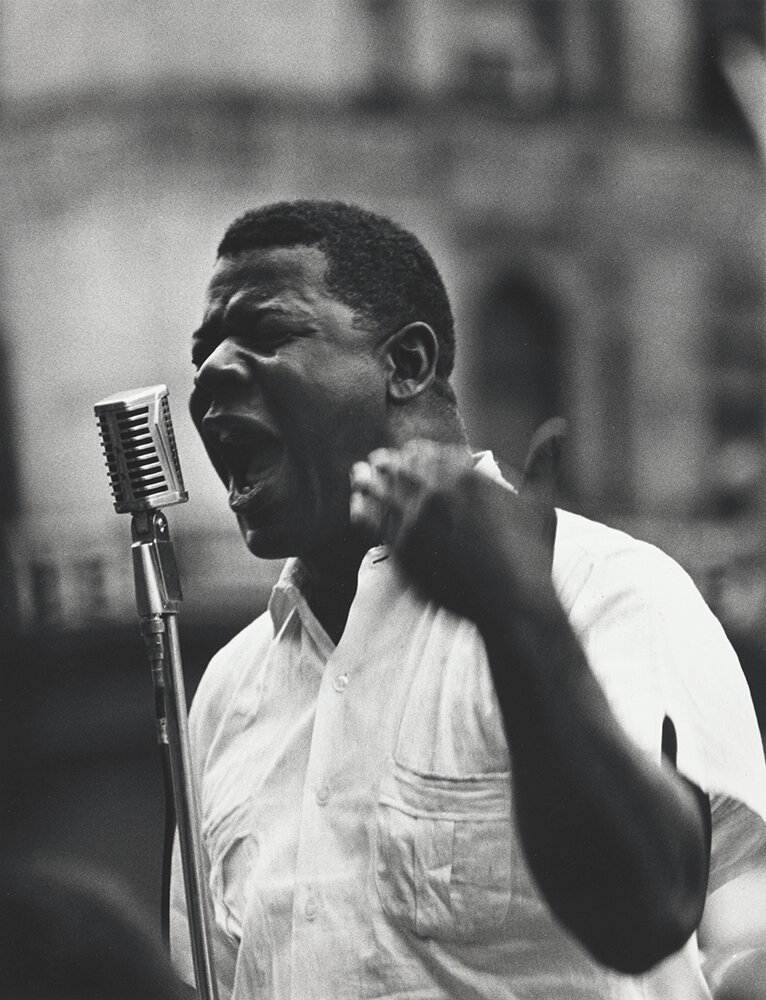Exhibition Review: Whitney Museum - Kamoinge, Working Together
Louis H. Draper, Boy, New York, c. 1965. Gelatin silver print: sheet, 14 1/16 × 11 1/8 in. (35.7 × 28.3 cm); image: 9 1/16 × 6 1/8 in. (23 × 15.6 cm). Whitney Museum of American Art, New York; purchase, with funds from the Photography Committee 2016.148. © Courtesy of the Louis H. Draper Preservation Trust and Bruce Silverstein Gallery
The Whitney Museum’s new show reminds us of the power of community and collectivism in a time when we may need it the most.
Louis H. Draper, Girl and Cuba (Philadelphia), 1968. Sheet: 13 15/16 × 11in. (35.4 × 27.9 cm), Image: 9 3/8 × 6 1/8 in. (23.8 × 15.6 cm), Frame: 20 × 16 in. (50.8 × 40.6 cm). Virginia Museum of Fine Arts, Richmond; Arthur and Margaret Glasgow Endowment. © Courtesy of the Louis H. Draper Preservation Trust and Bruce Silverstein Gallery
Working Together: The Photographers of the Kamoinge Workshop is a retrospective show focusing on the Kamoinge Collective during their formative years. “Kamoinge”, meaning “a group of people acting together”, was a group of Black artists living in New York City in the 1960s. As individual members of the photography community, they came together and created a space for growth, friendship, education, and inspiration. Over 140 works were collected for this show from fourteen of its earliest members and together these pieces tell a story of their community, the Black Arts Movement, and the power of collaboration.
Adger Cowans, Egg Nude, 1958. Gelatin silver print: sheet, 15 3/4 × 19 5/16 in. (40 × 49.1 cm); image: 11 1/2 × 17 3/16 in. (29.2 × 43.7 cm); frame, 20 × 24 in. (50.8 × 61 cm). Virginia Museum of Fine Arts, Richmond; gift of the artist. © Adger Cowans
Ray Francis, Untitled (woman at table), 1960s-70s. Gelatin silver print: frame, 16 × 20 in. (40.6 × 50.8 cm); image, 7 13/16 × 9 15/16 in. (19.8 × 25.2 cm). Collection of Shawn Walker
In 1963, this group of artists united to create a space for Black artists in a world so focused on the white gaze. Each artist brought their own personal experiences and backgrounds to the group and gave each other the space, time, and creative freedom that was hard to find elsewhere. The artists all came from New York City, the city of art and life; and as individual photographers, they documented their communities through their own unique lens. These communities were shown in detail, with love and care, with honesty and curiosity. Communities that had rarely been celebrated or studied from an artistic perspective before. The Kamoinge artists were able to create a space that centered the Black experience and gave a voice to Black artists in ways that weren’t given to them by the mainstream art world. Throughout their years as a group, the artists truly expanded the possibilities of art in the Black community and focused on stylistic growth and acceptance.
Beuford Smith, Pork Chop Davis, 125th and 7th Avenues, 1965. Gelatin silver print: frame: 20 × 16 in. (50.8 × 40.6 cm), image: 13 5/16 × 10 5/16in. (33.8 × 26.2 cm). Virginia Museum of Fine Arts, Richmond; National Endowment for the Arts Fund for American Art. © Beuford Smith
This growth was possible, in large part, due to their choices to prioritize spending time critiquing each other’s work, offering suggestions, and developing technical skills. Not only did they act as critical resources for one another, but they also focused on giving back to their communities. From developing mentorships to producing creative assignments, to numerous other opportunities, they allowed outside community members and young artists to learn with them.
The beauty of such a collective comes from the realization that although they created a bond as an artistic family, they were each individual artists who used the space to also grow independently. They each sought to become the best they could be while thriving together. The show demonstrates each artist’s personal style and allows you to spend time with the faces in the frame as well as the artists behind the camera. Through the combination of prints and audio recordings, one gets the unique experience of hearing directly from the members of the collective.
Albert R. Fennar, Untitled, 1964. Gelatin silver print: sheet, 11 × 14 in. (27.9 × 35.6 cm). The Museum of Modern Art, New York; purchase. Digital Image © The Museum of Modern Art/Licensed by SCALA / Art Resource, NY. © Miya Fennar and The Albert R. Fennar Archive
Ray Francis, Untitled (woman at table), 1960s-70s. Gelatin silver print: frame, 16 × 20 in. (40.6 × 50.8 cm); image, 7 13/16 × 9 15/16 in. (19.8 × 25.2 cm). Collection of Shawn Walker
Walking through the show one can sense the talent flowing from one room to the next. Skill and dedication pour out of each image as you learn not only about great artists but about the power of giving a voice to your community and of working together.
You can check out Working Together: The Photographers of the Kamoinge Workshop at the Whitney Museum through March 28, 2021.
By Ana Osorno














